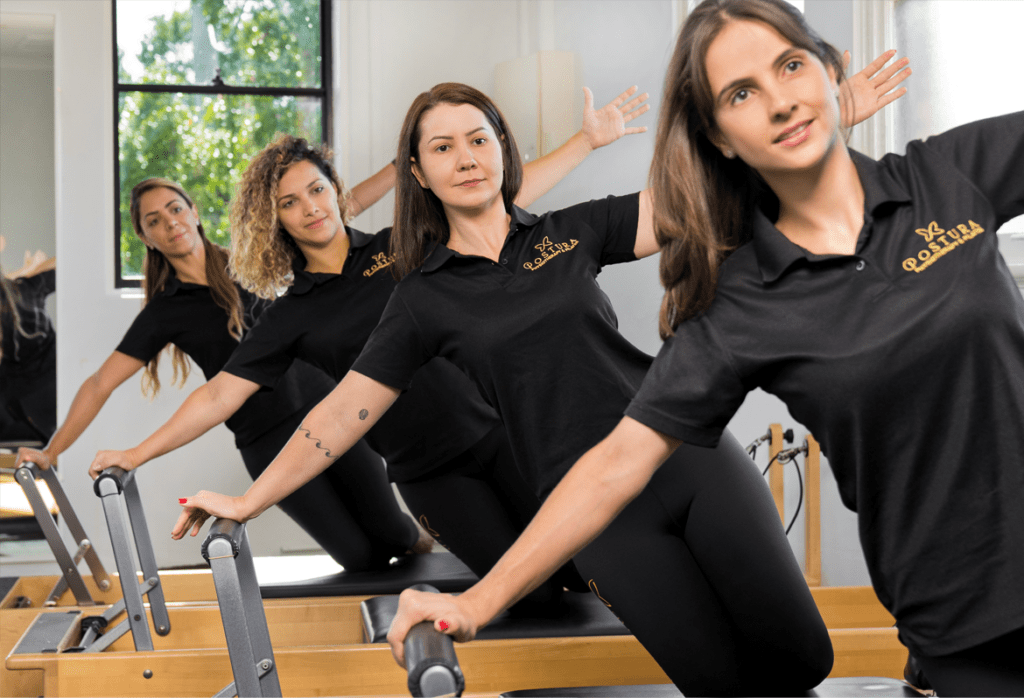YOUR POSTURA PILATES EXPERIENCE
Every body is different and Pilates is a movement modality that caters for this. Pilates improves muscle activation and functional movements as well as develops body awareness, strength and coordination. In addition to the health and fitness benefits, Pilates draws attention to body posture, focusing on body alignment and identifying postural faults that can be corrected with specific Pilates exercises.
If you’ve wanted to try Pilates for sometime now but don’t know where to start, read on to learn what your Pilates experience at Postura will look like.
1. WHAT TYPES OF CLASS SHOULD I CHOOSE?
At Postura, our studio class is delivered by our highly trained Pilates instructors with additional element of clinical rehabilitative knowledge. In a studio class, you will work on all Pilates equipments, including the Wunda chair and the Cadillac (and yes, Pilates is more than just the reformers!) This is a great class to try if you want to get a feel of different equipments and loves a variety!
If you like the idea of moving at a tempo and in sync with others, our Reformer classes will be just for you. But don’t worry, our Pilates instructors will slowly introduce you to the exercises and modify base on your skill and level.
Another great option will be our Mat Pilates classes. Mat class is a great starting position for anyone interested in Pilates and provides every benefits there are that Pilates offers. Mat Pilates provides that consistent mind-body concentration and will build a great foundation for better performance.
2. WE KEEP OUR CLASSES SMALL
Our Pilates classes are kept in small sizes, max 4 in studio Pilates, max 8 in reformers Pilates and mat Pilates. This helps us to attain the maximum benefits while still keeping a close eyes on everyone’s forms and techniques.
3. SO WHY SHOULD I CONSIDER AN INITIAL ASSESSMENT?
During your Initial Assessment, our pilates instructor will help you practice the activation Transverse Abdominus and Pelvic Floor Muscles (Deep Core Muscles) This process will allow you to correctly learn how to activate these muscles during your Pilates practice and any variations that would assist your specific needs. The initial assessment also allows us to complete a full Musculoskeletal and Functional movement assessment and recommendations can be made to which class would be best suited for you and your body especially if you have an injury or particular goals you want to work on.

4. 5 KEY PILATES PRINCIPLES
At Postura, our Pilates method incorporates modern theories of exercise science and stabilization and spinal rehabilitation should involve the following biomechanical principles.
- BREATHING: A three-dimensional breath pattern is encouraged, expanding the rib cage in all directions without neglecting anterior, lateral or posterior portions. Proper breathing brings about effective oxygenation of the blood, focuses the mind on each task and helps avoid unnecessary tension. A specific breathing technique also accompanies certain exercise motions so that the most effective core activation can be achieved and intra-abdominal pressure controlled.
- PELVIC PLACEMENT: stabilization of the pelvis and lumbar spine both statically and dynamically In all positions and throughout all movements will translate into effective and efficient movement patterns.
- SHOULDER BLADE PLACEMENT: Stabilising scapulae on the rib cage is important for setting a study foundation from which. The core cam work and arms can move from. When stability is absent, there is a tendency to overwork muscles around the neck and shoulders.
- RIB CAGE PLACEMENT: The abdominal muscles must often be recruited to maintain the rib cage and the thoracic spine, in proper alignment. This is key in helping avoid build-up of tension in the back muscle.
- HEAD and CERVICAL ELONGATION: You will often be told to imagine a string pulling the top of your head, or gently holding a soft peach between your chin and neck. Maintaining in correct neck posture is key in all Pilates exercises to help provide spinal stability by those deeper neck core muscles and also decrease tension in surrounding more superficial muscles.
Having awareness of these five principles and reinforce the, during your practice can help us achieve optimal performance as well as developing strength while safely balancing between improvements and injuries.
Pilates will stretch, strengthen and align your body, all at the same time. It also complements every other fitness endeavour because it will prepare to move better, with better control and efficiency.
Adding it to your routine will definitely surprise you in ways you’ve never thought of!
Beyond the general fitness and wellbeing benefits of Pilates, we love using it in our Physiotherapy and Exercise Physiology sessions to achieve the best results with rehab and post-injury recovery.
By Grace Hsu



